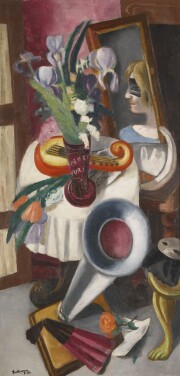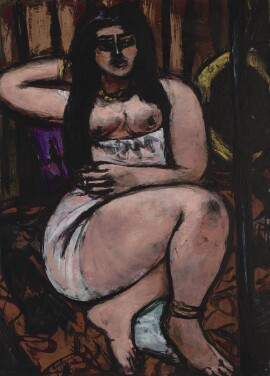Works by Max Beckmann at Sotheby's
Max Beckmann Biography
Max Beckmann’s intensely afflicted figures and self-portraits recall the artist’s traumatic experiences as a medical orderly during World War I. Although he dismissed the term himself, he is inextricably linked with the German Expressionist movement that reached a peak in Berlin during the 1920s and continued to exert a powerful influence on art, architecture, and cinema throughout the twentieth century.
Beckmann was born on 12 February, 1884 in Leipzig, Saxony and in his youth made careful study of the Old Masters like Michelangelo and Peter Paul Rubens as well as modern painters like Van Gogh. His work was admired during the years of the Weimar Republic and was honored with a series of major exhibitions in Mannheim, Basel, and Zurich. By the early 1930s, the Nazi government dubbed Beckmann a degenerate, confiscating hundreds of his works from German museums and firing him from his teaching post at the Städelschule Academy in Frankfurt. In 1937, he began a decade-long exile in Amsterdam, which proved to be the most productive period of his career. Often grafting personal memory onto mythological allusion, his works from these years both record and defy the fraught historical moment. During the last three years of his life, Beckmann taught at a number of art schools in the United States. On December 27, 1950, he was struck by a heart attack near his New York apartment, while on his way to view one of his paintings at the Metropolitan Museum of Art.
Max Beckmann’s work is held in numerous major museums, including the Tate Gallery in London, the Art Institute of Chicago, and the Museum of Modern Art in New York. In 2001, a record was achieved for the artist at auction when Self-Portrait with Horn (1938) sold for $22.55 million.
Read Less














